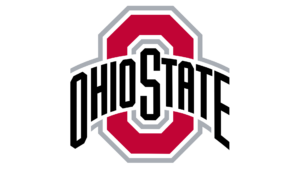 Arriving as a Fullbright Scholar in the United States from Poland over thirty years ago, Dr. Dorota Grejner-Brzezinska was drawn to The Ohio State University (OSU) to study Geodetic Science. “I had the opportunity to study global positioning system (GPS) and Ohio State had the world’s most prominent Geodetic Science department with many of the scientists behind the high-accuracy GPS-based solutions for civilian applications,” shares Grejner-Brzezinska, University Distinguished Professor and Lowber B. Strange Endowed Chair in the Department of Civil, Environmental and Geodetic Engineering at The Ohio State University; Vice President of the Office of Knowledge Enterprise, part of The Ohio State University’s Enterprise for Research, Innovation and Knowledge; NSF Engineering Research Visioning Alliance (ERVA) Principal Investigator. “In the late 1980s to early 1990s, this technology was not available in Poland. I became fascinated with the notion of space-based navigation and positioning after reading an article about GPS when I was a third-year geomatic engineering student in Poland. My arrival at Ohio State marks the beginning of my life-long love affair with GPS.”
Arriving as a Fullbright Scholar in the United States from Poland over thirty years ago, Dr. Dorota Grejner-Brzezinska was drawn to The Ohio State University (OSU) to study Geodetic Science. “I had the opportunity to study global positioning system (GPS) and Ohio State had the world’s most prominent Geodetic Science department with many of the scientists behind the high-accuracy GPS-based solutions for civilian applications,” shares Grejner-Brzezinska, University Distinguished Professor and Lowber B. Strange Endowed Chair in the Department of Civil, Environmental and Geodetic Engineering at The Ohio State University; Vice President of the Office of Knowledge Enterprise, part of The Ohio State University’s Enterprise for Research, Innovation and Knowledge; NSF Engineering Research Visioning Alliance (ERVA) Principal Investigator. “In the late 1980s to early 1990s, this technology was not available in Poland. I became fascinated with the notion of space-based navigation and positioning after reading an article about GPS when I was a third-year geomatic engineering student in Poland. My arrival at Ohio State marks the beginning of my life-long love affair with GPS.”
After earning her Ph.D., Grejner-Brzezinska worked for three years at the NASA Center for Space Development; a research center sponsored by NASA Stennis Center and located at Ohio State’s Center for Mapping located on west campus. In 1999, she was offered a faculty position at her home department and has been there ever since. “Over the years, I became engaged in the leadership of my professional organizations at the national and international level,” says Grejner-Brzezinska. “I think I’ve had good exposure to working with a variety of people with various backgrounds and what it means to be interdisciplinary.”
Dr. Grejner-Brzezinska’s research was initially focused on precise GPS orbit estimation, then later on high-accuracy GPS algorithms for civilian, engineering and scientific applications. Next, her team shifted the focus to designing and implementing multi-sensor systems to ensure navigation solutions where GPS signals are not available or are jammed. “My team developed the first all-digital and directly georeferenced airborne mapping system, which is now a widespread mapping standard,” explains Grejner-Brzezinska. “Our most recent work has been on AI-based algorithms for personal navigation and navigation of autonomous platforms. We also explored GPS signals for scientific applications such as the study of the ionosphere and detection of clandestine nuclear explosions. We observed disturbances in the GPS signals caused by these phenomena that, together with appropriate models, allowed us to locate explosions.”
“There are a few strands that run through all our visioning reports, and one of them is AI. It is envisioned to transform the pace and scope of engineering research. We held a visioning event in November specifically on this topic titled, Strategic Thinking for Engineering Research in the Era of Artificial Intelligence. The event identified major opportunities for engineering to lead advances in AI and key questions that can be formulated for AI to answer. We discussed what engineering leaders can do to ensure their organizations will thrive and meet their missions in the coming era of AI.”
— Dr. Dorota Grejner-Brzezinska
ERVA Principal Investigator
Lowber B. Strange Endowed Chair in Engineering
Vice President for Knowledge Enterprise
The Ohio State University
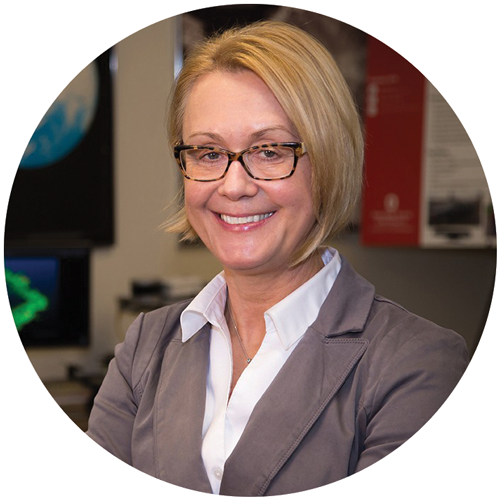
Bolstering Research Reputation and Societal Impact
In response to the shift in federal funding landscape towards large, interdisciplinary to convergent research opportunities, OSU established the Office of Knowledge Enterprise (OKE) two and half years ago to best capitalize on Ohio State’s assets and internal and external relations to significantly grow and diversify their extramural research portfolio, enhance recognition for its research excellence, and increase its overall research capacity. Dr. Grejner-Brzezinska leads the Office of Knowledge Enterprise with a focus on establishing initiatives and strategies to empower researchers and expand opportunities for external research funding and collaboration.
“Supporting and empowering researchers in both curiosity-driven and large-scale convergence research, OKE aims to bolster Ohio State’s research reputation, expand the societal impact of its work, and grow research talent,” explains Grejner-Brzezinska. “OKE’s activities integrate across the sciences, arts and humanities, engineering, policy, business, medicine, and other fields and rely on close collaboration with organizations and units across campus to position the University for national leadership in research and innovation.”
“If I were to define what OKE does in one sentence, I would say we design and implement targeted initiatives and provide centralized administrative business and operational resources that would further Ohio State’s pursuit of leadership in strategic areas of research strength,” continues Grejner-Brzezinska. OKE’s primary objectives include:
- Develop Ohio State’s research talent pipeline, with a specific focus on enabling formation of interdisciplinary teams
- Strategically grow and diversify Ohio State’s sponsored research portfolio
- Empower faculty to pursue curiosity-driven, use-inspired, and creative expression research
- Identify the need for and implement strategic initiatives that align with university-identified areas of importance
- Put researchers in an advantageous position to be “to the left” of the request for proposals (RFPs) when they are announced
“We work across the research silos and boundaries of colleges to make sure we have a team ready to go when the RFP is on the streets,” explains Grejner-Brzezinska. “If you start thinking about forming the team after the RFP is already out in the world, you’re too late. We want to continually be left of the proposal and that is what OKE is designed to do.”
OKE-developed initiatives include the Midwest Semiconductor Network, the Center for Quantum Information Sciences and Engineering, the Research Process Improvement Program, and faculty-led task force groups related to university-defined strategic growth areas, including space, microelectronics, and artificial intelligence. Additionally, this team manages financial support programs, including the President’s Research Excellence seed fund, the central research cost-share and strategic research travel funds, and the Vice President’s fund for strategic research initiatives, and offers pre- and post-award project management ramp-up support for Ohio State teams with minimal administrative support who are working in strategic growth areas.
Also working to grow and diversify Ohio State’s research portfolio, the Talent and Team Development Office (TTD) develops and deploys a continuum of programming to grow research capacity across the campus community. In collaboration with unit-based programs, TTD works to build research leadership capacity, strengthen the skills and knowledge needed for campus researchers to effectively compete for external funding across the faculty lifecycle, and promote the formation of new, interdisciplinary research teams in emerging areas.
The Research Development Office (RDO) provides strategic research development support by identifying existing and emerging areas of opportunity for targeted research development and investment and positioning Ohio State to successfully compete for external funding in these areas. Focused primarily on federal funding, and with an eye towards both portfolio growth and diversification, RDO works with Associate Deans for Research, Center Directors, and faculty PIs to lead pursuit and development of large-scale, complex proposals aligned with university research and innovation goals, while also supporting early-career faculty in establishing their prominence by securing federal research funding.
Unifying the Engineering Research Community
Dr. Grejner-Brzezinska also serves on the National Science Board and says this experience gives her a good vantage point of current happenings within different disciplines of the industry. “In the past, I served on the President’s Council of Advisors on Science and Technology (PCAST). I’m also on the National Space-based Positioning, Navigation and Timing Advisory Board. I believe having these valuable leadership and collaboration opportunities has led me to my role as the principal investigator for the National Science Foundation (NSF) Engineering Research Visioning Alliance (ERVA).”
ERVA is an ideation platform and neutral convener that identifies future engineering research directions by enabling an array of voices to have an impact on national research priorities. “With a mission of unifying the engineering community as one voice, ERVA looks to identify topics for new research that will have an impact on the most complex problems we face as a nation and a society,” says Grejner-Brzezinska. “We convene experts across related disciplines to weigh in on topics during two-day visioning events, because finding solutions to major challenges requires a big-picture approach. We are enabling voices which otherwise probably wouldn’t have been at the table when the discussion is about the strategic research directions for engineering in this country. This group also publishes reports that put forward engineering research priorities—Big Ideas—that are ripe for pursuit in the next five, 10, 20, and 30 years and are ready for engineering leadership.”
Joining in this mission, Dr. Forough Ghahramani, Assistant Vice President for Research, Innovation, and Sponsored Programs for Edge, has recently been appointed to ERVA’s Standing Council which solicits and integrates input from all stakeholders with interest in engineering research. “It is an honor to join this transformative alliance and help fuel ERVA’s initiatives,” says Ghahramani. “ERVA plays a critical role in providing direction to the larger national conversation for future engineering research and I am excited to participate with distinguished visionaries in ERVA activities designed to catalyze the engineering community’s pursuit of innovative, high-impact research that ultimately benefits society.”
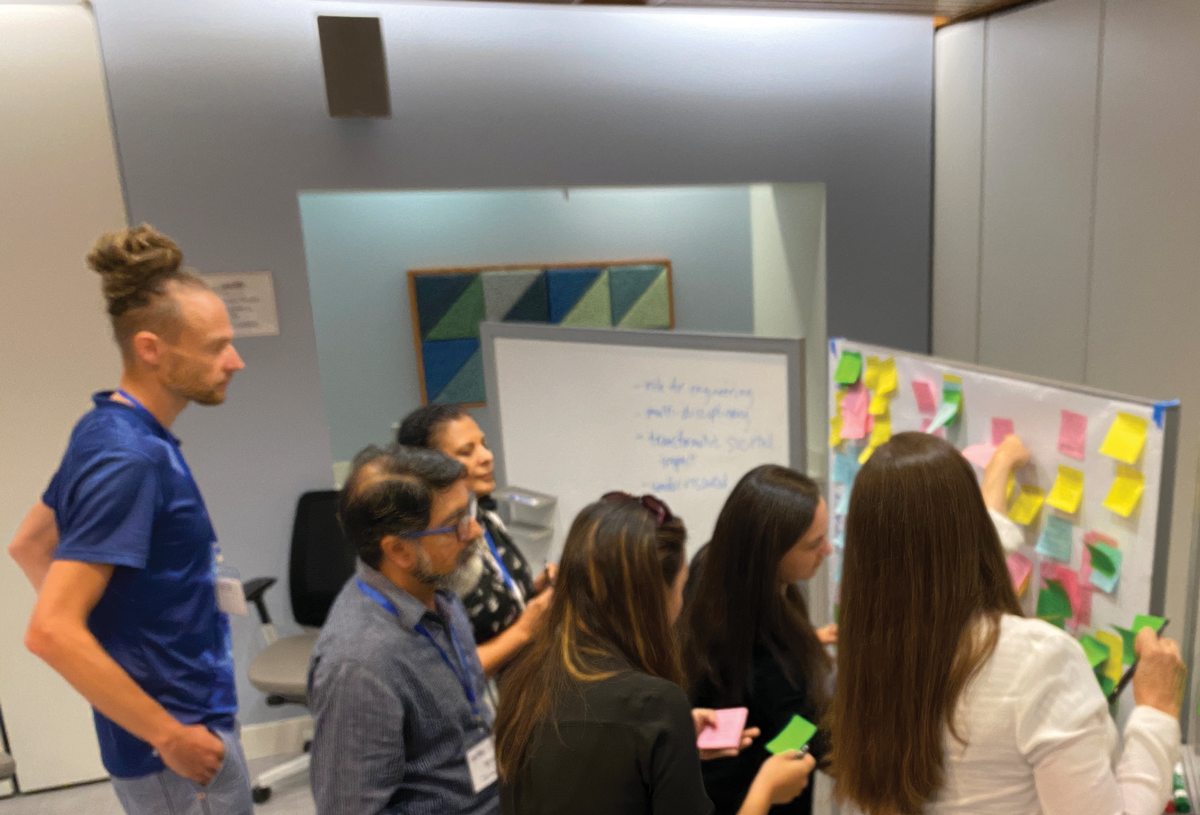
September Visioning Event
“Engineering Materials for Sustainable Future”
Bringing Diverse Voices to Engineering Research
Dr. Grejner-Brzezinska says ERVA’s top priority is also their most challenging task. “We want to create the right atmosphere, invite the right people, and ask the right questions to inspire, elucidate, and distill convergent, breakthrough priorities for engineering research. Embedded within that task is ensuring that ERVA represents the many diverse voices of engineering research. Diversity is in our DNA; we intentionally involve different sectors and related disciplines in our leadership and in our visioning events so we can cultivate ideas from many perspectives. That also goes for differences in career stage, gender, and race/ethnicity. Our outreach for ideas and for visioning event participants always involves an open call, so everyone interested in the future of engineering research has a chance to get involved.”
To date, ERVA has held seven visioning events and released six reports—with the seventh being released in January 2024. “ERVA is constantly vetting visioning ideas, planning and executing visioning events, and disseminating reports to inspire the next generation of engineering research on topics of great societal impact, from climate change to water security and supply chain resilience,” explains Grejner-Brzezinska. “Our foundation is built on a community and a network of networks to raise awareness of our work. At this time, we have 46 engineering professional organizations aligned with us as Affiliate Partners, and almost 2,000 ERVA Champions, individuals who have stepped up to be a part of this work.”
Now midway through their third year, ERVA has celebrated many achievements and is excited to see the impact of their mission. “This alliance is truly a first-of-its-kind for engineering research,” shares Grejner-Brzezinska. “We are building a community that crosses engineering silos, bringing together researchers around significant research themes, and asking them to leave their own agendas at the door to do something bigger—these are not trivial accomplishments.”
“Our report findings have been referenced in executive branch science circles, for example, in the White House report, Bold Goals For U.S. Biotechnology And Biomanufacturing: Harnessing Research And Development To Further Societal Goals,” continues Grejner-Brzezinska. “ERVA has also had findings from their task force leadership reports used to inform research roadmaps, like the Unhackable Infrastructure Report. I am proud of ERVA’s growing name recognition as an effective and neutral convener of diverse groups of experts, and of our growing impact on shaping the future of engineering research in this country.”
Leveraging Data to Measure Impact of Initiatives
Going forward, ERVA continues to determine ways they can leverage data to measure the impact of their initiatives and community on engineering research. “We’re finding that how we collect and utilize data is evolving and we’re doing some level-setting with a data scan of publications and topics prior to events—this also informs how we shape the content of events,” explains Grejner-Brzezinska. “ERVA was established with an independent evaluator as part of the program, and as our reports have more time in the marketplace of ideas, we anticipate being able to leverage data sets to measure impact.
“To date, we have been keeping track of the number of downloads of our reports that is steadily growing, number and type of citations of our reports on social media and in scientific publications, diversity of our visioning events participants, and geographic distribution of our events and presentations,” continues Grejner-Brzezinska. “Since we’re still in our early years, we’re excited to see our long-term impact and the opportunity to expand the recognition of ERVA and our community’s innovative ideas.”
“It is an honor to join this transformative alliance and help fuel ERVA’s initiatives,” says Ghahramani. “ERVA plays a critical role in providing direction to the larger national conversation for future engineering research and I am excited to participate with distinguished visionaries in ERVA activities designed to catalyze the engineering community’s pursuit of innovative, high-impact research that ultimately benefits society.”
— Forough Ghahramani, Ed.D.
Assistant Vice President for Research, Innovation, and Sponsored Programs
Edge
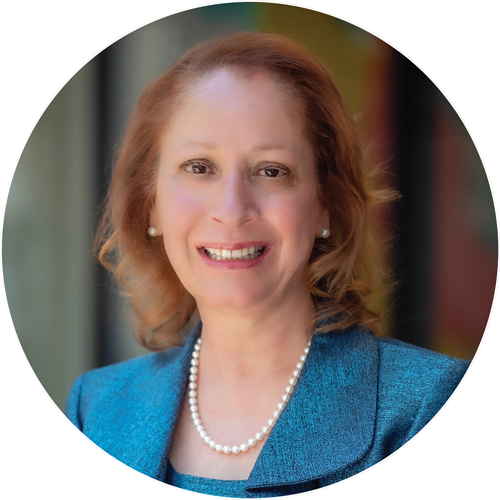
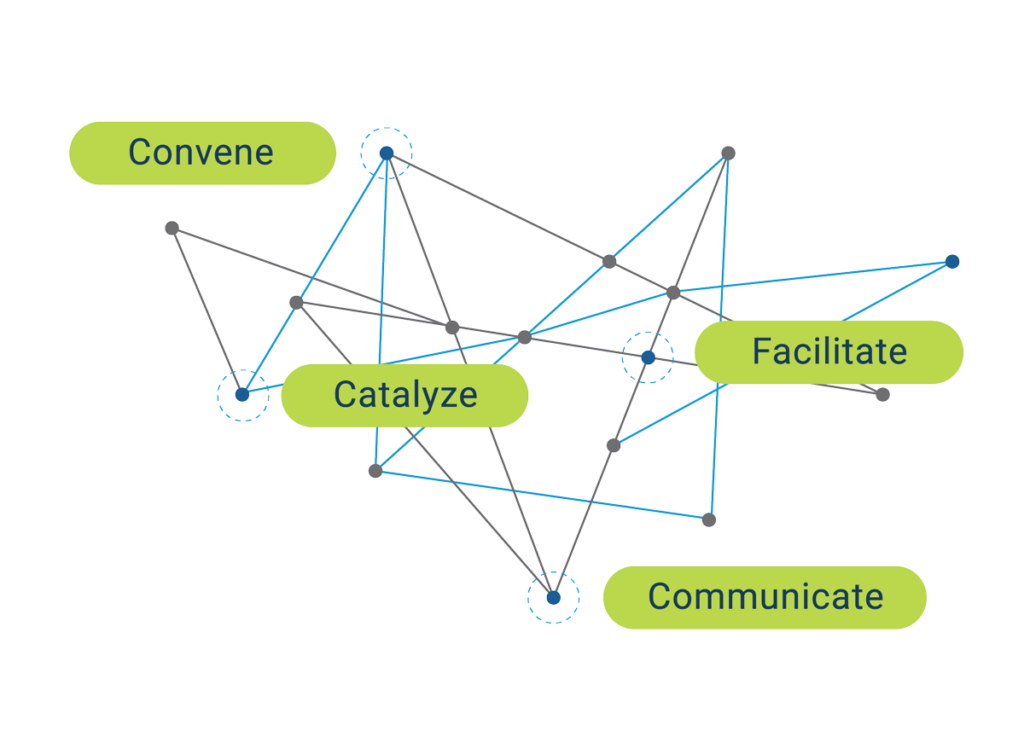 High-Impact Research on a Global Scale
High-Impact Research on a Global Scale
While ERVA is an NSF-funded initiative, the research themes that are chosen and disseminated through reports aim to have a global impact. “When selecting ERVA visioning themes, we explore topics that will have a greater societal impact, including climate change, sustainable transportation, unhackable infrastructure, water security, distributed manufacturing, and leveraging biology for engineering impact,” explains Grejner-Brzezinska. “Engineering has a powerful role to play in mitigating the world’s most complex problems and ERVA was designed to trace a pathway for engineering research to lead.”
“Our mission is to convene, facilitate, catalyze, and communicate,” continues Grejner-Brzezinska. “As a visioning initiative, technology is among the developments we expect to arise from the engineering research that ERVA catalyzes. Technology is front and center of what we do and every topic includes technological innovation. In looking specifically at artificial intelligence (AI), it will play a transformational role in engineering research in the years ahead.”
“There are a few strands that run through all our visioning reports, and one of them is AI. It is envisioned to transform the pace and scope of engineering research. We held a visioning event in November specifically on this topic titled, Strategic Thinking for Engineering Research in the Era of Artificial Intelligence. The event identified major opportunities for engineering to lead advances in AI and key questions that can be formulated for AI to answer. We discussed what engineering leaders can do to ensure their organizations will thrive and meet their missions in the coming era of AI.”
Enhancing ERVA’s Mission
Since diverse participation is at the heart of ERVA’s mission, the alliance continues to look for new partners and connect with innovative minds in the engineering industry. “Collaboration is the new competition,” says Grejner-Brzezinska. “Partnerships are foundational to addressing the most complex scientific, engineering, or societal problems. ERVA’s core partners are the Big 10 Academic Alliance, EPSCoR/IDeA Foundation, and the University Industry Demonstration Partnership (UIDP).”
“To accomplish ERVA’s mission we continue expanding our network of networks beyond the 46 engineering professional organizations, and over 2000 individuals. In order to create more impact, we work to strengthen our partnership with engineering thought leaders, such as engineering deans, corporate CTOs and VPs for Innovation, federal agencies that sponsor research, and congressional committees whose mission is relevant to the engineering roadmaps that ERVA generates.”
Looking ahead, Grejner-Brzezinska says she is excited for the opportunity for ERVA to be the agent that envisions a world that is yet to exist. “Theodore von Karman said in 1962, ‘Scientists study the world as is, engineers create the world that never has been.’ ERVA is the most exciting opportunity for all of engineering to reimagine the world for a better tomorrow and to propel U.S. leadership in transformational engineering solutions to the most vexing societal problems.”
An important part of expanding ERVA’s influence and impact on society is advancing diversity, equity, and inclusion (DEI) and gaining voices from across the industry. “We continue to advance DEI by ensuring our leadership is diverse and our visioning participants demonstrate diversity,” explains Grejner-Brzezinska. “At our first seven visioning events, we had representatives from 46 states and the District of Columbia, plus three foreign countries. Plus, our visioning event participants represent double the percentage of female and Black engineers when compared to the U.S. population of doctoral engineers.”
“We must also talk about diversity of perspectives,” continues Grejner-Brzezinska. “Half of the event participants at our last visioning event represented industry, not just academia. And one in five participants were early career professionals. It has been proven that diverse organizations spark innovation and diverse teams collaborate more effectively and deliver better answers. Our visioning event participants tell us that it’s not the same group of people they see presenting at their professional conferences. That diversity infuses ERVA events with creativity and the freedom to think about the role engineering will play in the future.”
To learn more about the NSF Engineering Research Visioning Alliance, visit www.ervacommunity.org.


